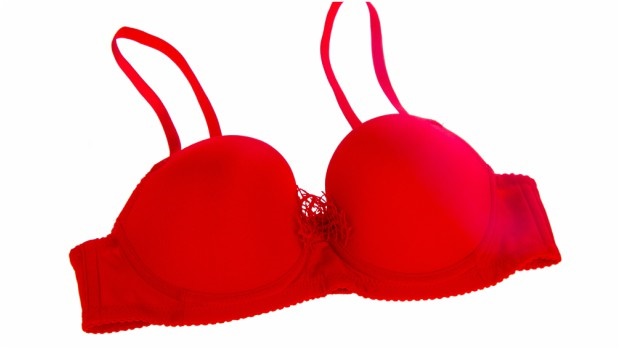
She'd had enough of her breasts being the first thing people noticed about her.
And with her wasp-like figure (she wore size-eight jeans), her enormous breasts also made her uncomfortable.
So at the age of 22, Hettie Fourie from Port Alfred decided to have a breast-reduction operation. That was 27 years ago – and it’s the best thing that’s ever happened to her, she says.
“I got a new life,” Hettie (49) says. “And I haven’t regretted it once. Today I still have attractive breasts and often go bra-less.”
Now Hettie’s daughter, Roxane van Aswegen (27), has the same problem. She has an attractive size-34 figure but her ample bust forces her to wear FF-cup or even bigger bras. She has resorted to wearing two bras and tight-fitting tank tops under her pretty blouses.
“Swimming costumes are out; she has to swim in oversized T-shirts,” Hettie says. Her biggest wish is to give her daughter “a new life” too.
But they don’t have R47 000, the lowest estimate they’ve been given for a breast reduction.
Dr Christie Smit, a plastic and reconstructive surgeon at Panorama Mediclinic in Cape Town, says breast reductions are one of the five most common cosmetic procedures in South Africa.
It’s often done for reasons of comfort, Dr Smit says, adding that for a woman with DD breasts it’s difficult to do some things, including jogging. He says many women suffer discomfort due to large breasts, not only overweight women, as is commonly thought.
“If a woman is overweight we advise her to first lose weight until she’s closer to her ideal weight.”
Dr Smit adds that women tend to lose weight more easily if their breasts are smaller because they’re motivated to improve the rest of their figure. Women with smaller breasts can also exercise more easily.
Younger women’s breasts usually consist of more breast tissue than fat so weight loss doesn’t much affect the size of the breasts. In older women the opposite is often the case.
The amount of tissue removed during a breast reduction varies but it’s usually around 600 g, Dr Smit says.
“Sometimes you remove one to two kilograms per breast and at other times only 600 g to 700 g.”
Some women can still breastfeed after they’ve had a breast reduction. “The nipple, milk glands and breast tissue aren’t separate from one another but sometimes too little tissue remains (to be able to breastfeed).”
Breast reductions can bring about a big improvement in a woman’s life. “Young girls with huge breasts are often so embarrassed that they refuse to go on school camps because they’re scared they’ll have to shower in front of others.”
The procedure greatly benefits younger women in this situation, he says. “Many women with abnormally
big breasts have a poor self-image,” Dr Smit says. “If you can change someone’s life with a two-hour operation, why not?”
The youngest woman he’s performed the operation on was 16 – but it’s not commonly done on such young patients.
But, he says, the moms of young girls who’ve had the operation have often told him how it’s transformed their child’s personality. In women who had the operation when they were young there’s a chance that in menopause their breasts will either grow or get smaller, even if their weight remains constant.
Dr Smit performs on average four breast reductions a month. He says the women who have the procedure vary considerably in age, ranging from 16 to well into their fifties and sixties.
The operation lasts for about two hours and patients usually spend one night in hospital.
Dr Christie Smit, a plastic and reconstructive surgeon, says it’s not particularly painful. “Many patients experience no pain the morning after the operation. It hurts for only a few hours or a day.”
Many women can drive again a week after the operation and most can drive and return to work after two weeks.
It’s possible to lose sensation in the nipples after the op but this happens very seldom. “A few months after the op most women have sensation back. Some even have more sensation than before. This happens because in big breasts the nerves become stretched.”
Dr Smit says complications are rare, but if they do occur, the most common one is bleeding. Many surgeons insert drainage tubes until the next morning to help prevent blood accumulating in the breasts.
The wounds of smokers may heal more slowly than those of nonsmokers. The price of a breast-reduction operation depends on the time spent in theatre. “An op that takes about two hours costs about R50 000, which includes the surgeon’s fee, the anaesthetic and a one-night stay in hospital,” Dr Smit says.
Most medical aid funds don’t pay for breast reductions. Dr Noluthando Nematswerani, head of Discovery Health’s clinical policy unit, says their company helps members in its top plans who have big breasts if they meet clinical entry criteria. These include debilitating neck pain and pain in the upper back.
Is it vanity?
Jean Marais* (58), one of Cape Town plastic surgeon Dr Christie Smit’s patients, says she’d wondered if she was vain to have the op. But Dr Smit reassured her that carrying so much extra weight on her chest was just making life unnecessarily difficult.
She says her exercise routine was one of the reasons she had the procedure. “I love my daily yoga classes and in certain positions it felt as if my breasts were suffocating me. “Also, the indentations in my shoulders from my gigantic bra straps weren’t attractive.
There are also styles of clothing you can’t wear, and my special swimming costume that kept everything under control cost a fortune. “In the 18 months since my breast reduction my life has changed in many ways.
I wear different clothes (which fit beautifully), I’ve lost weight and generally feel more agile. And I no longer look like a pouter pigeon.”
How the right bra can help
If you can’t have a breast-reduction operation the right bra can work wonders.
Sandra Thomas, owner of Satin Candy underwear and bra boutiques in Durban and neighbouring Kloof, says there should be no surplus material in the cups of the bra when you try it on. If there is, the bra is too big. If your breasts squeeze over the cup, the bra is too small.
The straps should fit comfortably over your shoulders and not cut into your skin.
“Measure your body directly beneath your breasts while wearing a bra.The measuring tape must be fairly tight. This is the bra size, for example 34. Now measure around the fullest part of your breasts while wearing a bra. This indicates the cup size – for example, E.”
She advises women to adjust the bra straps when trying on a bra and make sure that their breasts fit in the cups properly. “Put on a T-shirt or blouse over the bra so you can see the shape the bra gives you.”
Carla Schoeman of Cape Town outlet Storm in A-G cup, says a sports bra should fit the same as any other bra but be firm and cover the whole breast.
“Choose a bra according to your needs. If you run, jump or practise adventure sports you need a high-impact bra that keep your breasts in place, limit movement while running and prevent chafing.”




 Publications
Publications
 Partners
Partners
















